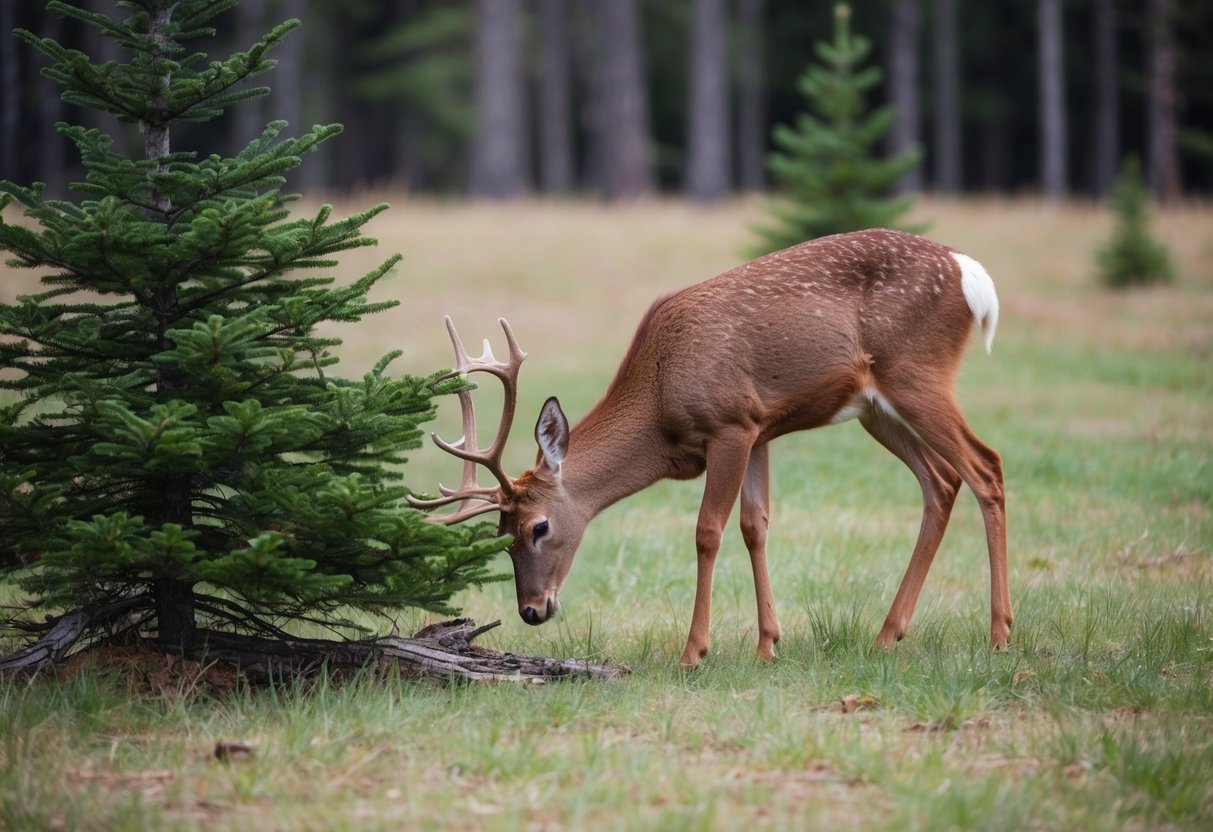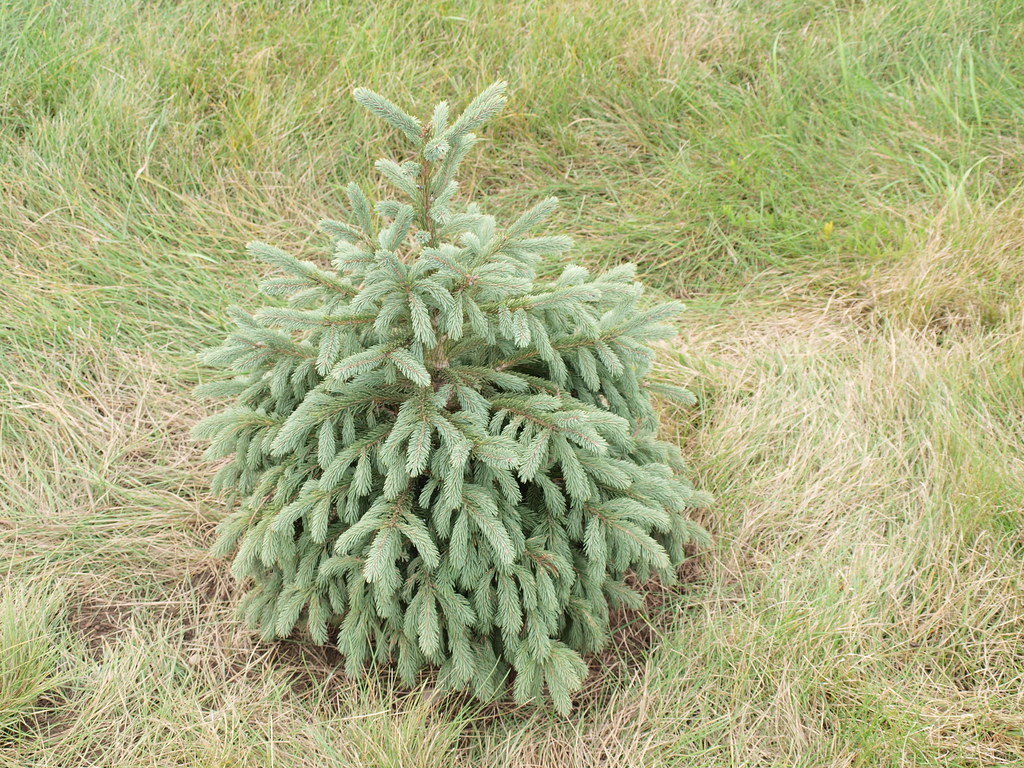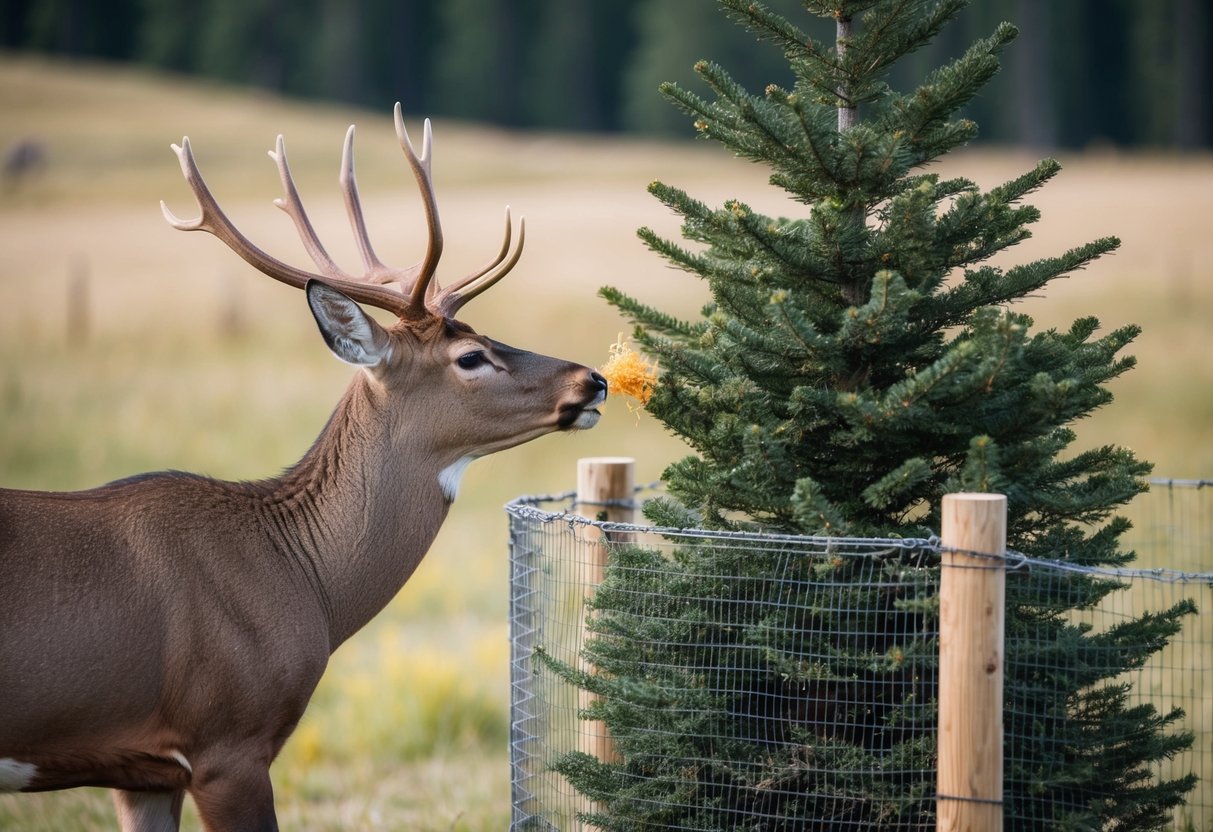If you’re a gardener or landscaper worried about deer munching on your plants, you might be wondering: do deer eat Black Hills spruce?
These trees are not just a beautiful addition to your yard but also hardy and adaptable.

Though deer are known to nibble on various plants and trees, Black Hills spruce trees are typically deer-resistant.
This means you can enjoy their lush green foliage without constantly fearing they’ll become a deer’s next meal.
Their resilience doesn’t stop there—they’re also well-suited for colder climates and can withstand harsh conditions.
Do Deer Eat Black Hills Spruce?

Black Hills Spruce (Picea glauca densata) is known for its resilience and adaptability. One of its notable characteristics is its resistance to deer browsing.
Deer typically avoid Black Hills Spruce. The needles are tough and not appealing to them.
This makes the tree an excellent choice for areas with high deer populations.
While many trees can be damaged by deer, Black Hills Spruce stands out as a reliable, deer-resistant option.
This tree grows well in various conditions and provides a sturdy addition to your landscape.
If you’re looking to plant a tree that deer are likely to leave alone, consider the Black Hills Spruce.
Are Black Hills Spruce Deer Resistant?
Black Hills Spruce, scientifically known as Picea glauca var. densata, are known for their deer resistance.
These trees are generally not favored by deer, making them a good choice if you’re looking for deer-resistant options for your garden.
If you live in areas within USDA Hardiness Zones 2-6, Black Hills Spruce will thrive well.
These trees can handle cold temperatures and harsh conditions, which makes them a durable addition to landscapes.
How To Keep Deer From Eating Black Hills Spruce

If you have Black Hills spruce trees, you might worry about deer nibbling on their foliage.
There are several methods to protect your trees from being eaten by deer.
Dryer Sheets: Tie dryer sheets to the branches. The strong scent deters deer.
Fencing: Place a fence around your spruce trees. A tall fence can keep deer out effectively.
Tree Guards: Use tree guards to protect the lower parts of your tree from deer.
Repellents: Spray deer repellents on your trees. These often have an unpleasant taste or smell that keeps deer away.
Plant Deer-Resistant Trees: Surround your Black Hills spruce with deer-resistant trees, like Eastern red cedar or Norway spruce. This can create a natural barrier.
Sheltered Location: Plant your trees in areas sheltered from strong winds. This doesn’t stop deer but helps keep your trees healthy and resilient.
Choose one or combine several methods to keep your Black Hills spruce safe.
Will Black Hills Spruce Grow Back After Being Eaten By Deer?
Black Hills Spruce can grow back after being nibbled by deer, but it requires proper care and attention to aid recovery. If you want to help your tree grow back, follow these specific steps.
Steps To Help Your Black Hills Spruce Recover
Prune Damaged Branches
Trim the branches that have been most affected. Prune back to a healthy bud to encourage new growth. Avoid cutting into the main trunk or overly large branches as it can harm the tree’s overall structure.Add Protective Barriers
Install fencing or tree guards around your Black Hills Spruce. This keeps deer from reaching the branches and leaves, preventing further damage while the tree recovers.Watering and Mulching
Keep the soil evenly moist, but not waterlogged, to support the tree’s recovery. Add mulch around the base to retain moisture and prevent weeds, which can compete for nutrients.Fertilize Appropriately
Use a balanced fertilizer suitable for evergreen trees. Apply it in early spring and again in late summer to provide the nutrients your spruce needs to regrow effectively.Monitor Growth and Health
Check the tree regularly for new growth and signs of recovery. Watch for any pest infestations or diseases that may hinder its ability to regrow and address these issues promptly.
Following these steps will give your Black Hills Spruce the best chance to bounce back and continue growing towards its mature height of around 30 to 50 feet.
Understanding Deer’s Diet And Black Hills Spruce
Deer eat a variety of food throughout the year, including grasses, nuts, fruits, and leaves.
The Black Hills Spruce, an evergreen tree, may occasionally be part of their diet, but its consumption can depend on the season and availability of other food sources.
Seasonal Variations In Deer’s Diet
During spring and summer, deer primarily feed on young leaves, flowers, and herbs. These seasonal foods are abundant and provide essential nutrients.
Deer might avoid evergreen trees like the Black Hills Spruce, as they have many other options.
In fall, deer shift their diet to acorns, nuts, and berries. They prepare for winter by eating high-energy foods.
Black Hills Spruce may not be a preferred choice due to the availability of more nutrient-rich alternatives.
In winter, food becomes scarce.
Deer eat more bark, twigs, and evergreen trees, including Black Hills Spruce.
The rough texture of spruce needles might be less appealing, but in harsh conditions, deer adapt. The Black Hills Spruce can provide necessary sustenance during lean months.
What About Other Wildlife And Black Hills Spruce?
Black Hills Spruce trees are not just for decoration in your landscape. These evergreens, which belong to the Pinaceae family, are also great for wildlife.
Small animals like birds often find shelter in the dense branches. The needles provide cover, making these trees great for nesting.
Don’t be surprised if you spot various local bird species enjoying these trees.
In addition to birds, small mammals like squirrels may also use the trees for protection. They can hide from predators or harsh weather in the thick, evergreen branches.
Sometimes, deer may come near the Black Hills Spruce, but they usually don’t eat them. Deer tend to prefer other plants, especially during the warmer months when more food options are available.
Another type of animal you might notice is porcupines. They sometimes gnaw on the bark. However, this usually doesn’t harm the tree significantly.
Here is a quick summary of wildlife that interacts with Black Hills Spruce:
| Wildlife | Interaction |
|---|---|
| Birds | Find shelter and nesting sites |
| Squirrels | Use branches for protection and nesting |
| Deer | Rarely eat these trees |
| Porcupines | Occasionally gnaw on the bark |
This tree is quite hardy and can tolerate USDA Hardiness Zones 3-6.
If you live in these zones, you’ll find Black Hills Spruce a robust and dependable choice for both your landscape and local wildlife.
